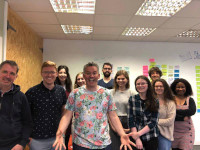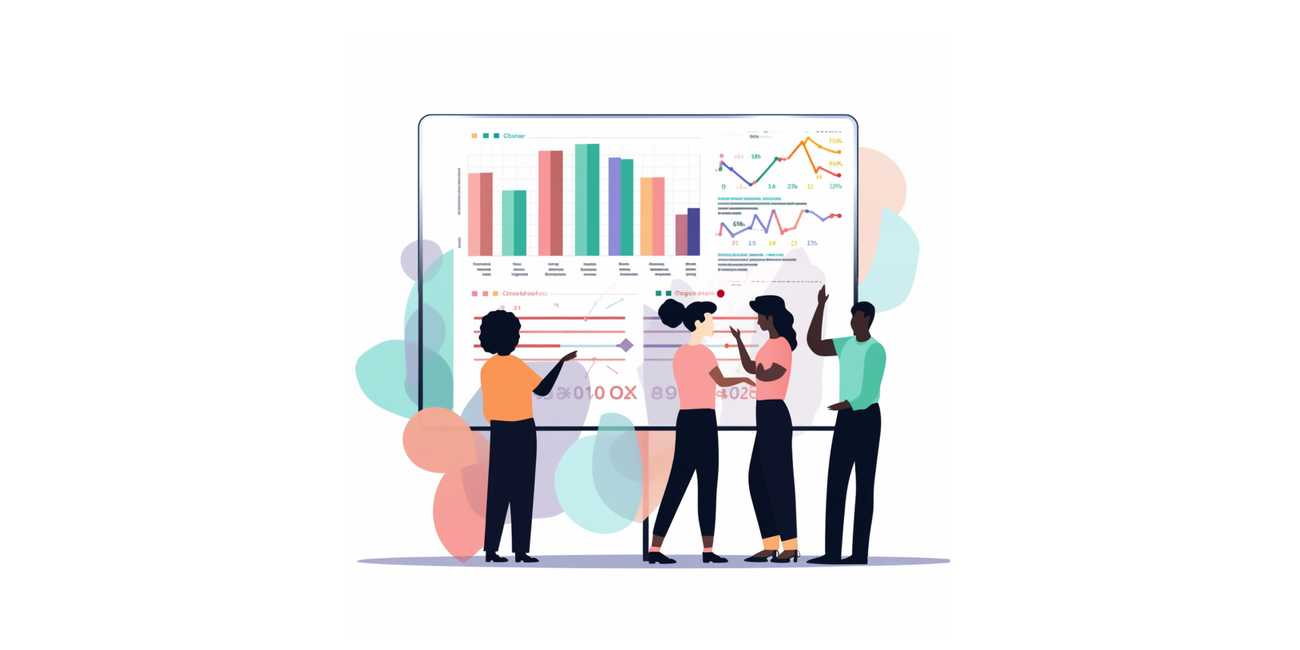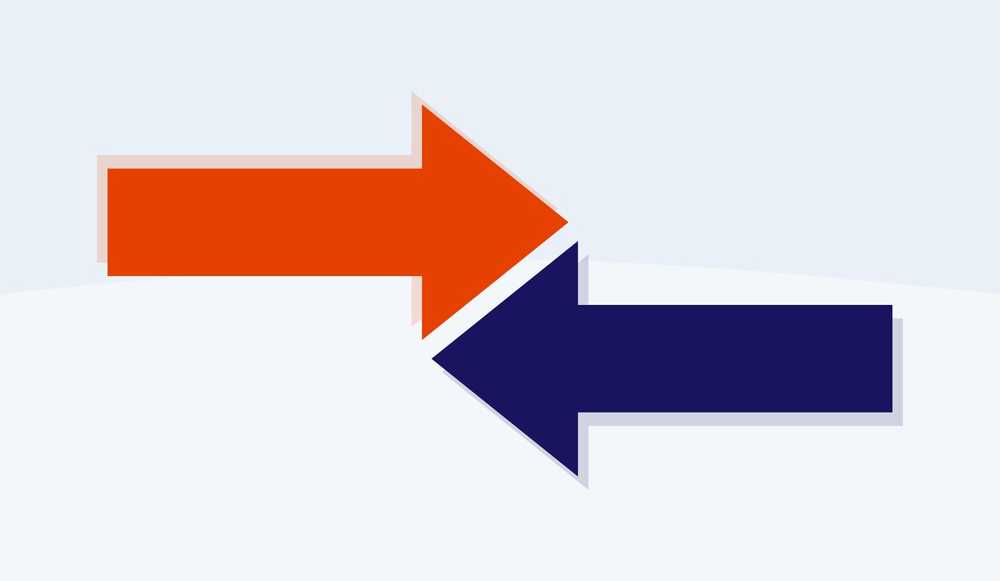PHP Application Modernization - 10 Key Lessons Learned
Over the last 15 years, I've witnessed the continuous evolution of the PHP language and its frameworks. But with this progress, the challenge of modernizing legacy PHP systems becomes increasingly apparent. The startup boom that we experienced in the first decade of the new millennium brought us many new digital products and systems that now start to suffer the symptoms of ageing software. These systems, once cutting-edge and innovative, now require strategic overhauling to stay relevant and efficient.
In my journey at Accesto, I've learned valuable lessons from legacy software modernization cases. These insights, drawn from my hands-on experience, may be essential for anyone embarking on similar endeavours.
Like any other challenges, there are better and worse ways of tackling them. Our approach at Accesto emphasizes user-centric features, quality over speed, and the need for a holistic perspective. We've balanced technical debt pay-off with new feature development and understood the nuances of effectively upgrading software infrastructures.
Here are my top 10 insights from our experience with application modernization.
1. Prioritize Features Based on User Engagement
Key Takeaway: Do not waste time on refactoring features that are barely used or not used at all. Prioritize feature enhancements based on high user engagement.
In the legacy application modernization process, a critical step is to measure and analyze user engagement with existing features. This assessment guides the decision on which features to modernize, rewrite, or potentially remove.
Often, removing lesser-used or outdated features can streamline the application more effectively than rewriting them. Maintaining unused features in the codebase incurs ongoing maintenance costs, and rewriting them also demands additional resources. Therefore, eliminating some features can be a smarter approach, reducing unnecessary expenses. This strategy not only enhances operational efficiency but also aligns the modernization process with the actual business needs and user demands, ensuring a more cost-effective and user-focused application.
Feature Focus to Align with User Needs - example
MediaHQ, an Irish platform for sending press releases, provides a compelling example of aligning features with user needs. In the past, MediaHQ offered a feature for sending single releases without utilizing the full platform. However, this feature had minimal usage. In the process of modernization, instead of recreating this seldom-used feature in the new codebase, it was strategically discontinued. Our modernization approach ensures that new features are based on actual user engagement and needs. This results in a more streamlined, efficient tool that focuses on delivering tangible business value and an enhanced customer experience. Such targeted modernization not only makes the effort cost-effective but also maximizes the impact, contributing significantly to the success of legacy application projects by optimally utilizing resources.
2. Quality Over Expediency in Modernization
Key Takeaway: Investment in modernization should result in higher quality, period. If there are not enough resources to do it the right way, then don’t do it at all!
In application modernization endeavours, cutting corners can lead to detrimental outcomes. A focus on quick fixes or expedient solutions often results in merely transforming legacy code into a new, but equally problematic, format. Instead of paying off the tech debt, you just take another loan to pay the existing one - this misses the whole point of modernisation.
This approach fails to address the fundamental issues of scalability and maintainability that are crucial for modern digital products. Instead, a quality-driven approach should be emphasized. By taking the time to properly modernize and rewrite legacy applications, organizations ensure that modernization yields genuine long-term benefits.
Quality first to build sustainable solutions - example
Accesto tackled a significant challenge with the NotebookRank platform, aiming to scale the system to accommodate a growing user base without compromising on performance. Our approach centered on revamping the platform's architecture, enhancing both scalability and performance. This strategic move ensured the delivery of high-quality, sustainable improvements, focusing on long-term effectiveness rather than quick, temporary fixes. It resulted in not only a significant performance boost but also an exceptional 65% increase in conversion rates!
3. Balancing Tech Debt Repayment with Feature Development
Key Takeaway: New features are always more tempting. Avoid focusing only on them and regularly address technical debt to maintain a healthy and scalable codebase.
Balancing the repayment of technical debt with the development of new features is a critical aspect of application modernization. It's essential to avoid the temptation of focusing solely on introducing new functionalities at the expense of addressing underlying technical debt.
This balance is key to ensuring sustainable software development and operational efficiency. Effective management of technical debt allows for the continuous delivery of new features while maintaining the health of the codebase. By doing so, organizations can enhance developer productivity, improve the customer experience, and align new feature delivery with the overarching modernization strategy.
Tech Debt and Innovation is a Delicate Balance
Placker faced significant challenges with its project management platform, including a complex codebase that impeded new feature development and increased maintenance efforts. Accesto's intervention involved an architectural overhaul and the introduction of new technologies, leading to a substantial improvement in code quality and maintenance efficiency. This refactoring effort notably accelerated the time-to-market for new features by around 40%. One of the remarkable outcomes was the development of award-winning features, demonstrating how effectively managing technical debt can pave the way for innovation and rapid, efficient feature development.
This approach ensures that the application remains adaptable, scalable, and capable of meeting evolving business needs and technological advancements.
4. Clean Code Transition: Out with the Old
Key Takeaway: Tech debt is not paid off until you delete the legacy code. So make sure to delete the old parts of the app as soon as the new versions are fully released to all users.
The importance of removing legacy code post-rewriting is pivotal in truly reducing technical debt. This action ensures that the new, modernized codebase is not cluttered with outdated and unused code segments, which can hinder maintenance and scalability.
Utilizing version control systems like GIT for historical reference, organizations can confidently clean up their codebase without losing track of past iterations.
Clean Code is a Necessity for Streamlining Code
In a software landscape where 97% of existing applications utilize open-source code, there's a clear shift towards modern coding practices. This trend highlights the importance of transitioning to cleaner, more efficient codebases by phasing out legacy code.
This cleanup is not just a symbolic gesture but a crucial step in streamlining the application, enhancing its performance, and preparing it for future development. And for developers - deleting the old code can also be fun - like in this legacy system modernisation case study.
5. Deep Diving into Requirements: The Devil is in the Details
Key Takeaway: Make sure you know the feature well before you rewrite or modernise it.
Deep diving into requirements during application modernization is more than just understanding the surface-level needs.
It involves a meticulous examination of each feature, its purpose, and its impact on the overall system. Teams should engage in probing discussions, exploring how each element interplays within the larger business context. This in-depth exploration reveals hidden or unarticulated requirements that could significantly influence the modernization trajectory. Without this, you are at risk of delivering features that miss some important pieces or even produce incorrect results.
The task of uncovering hidden needs
bSafer's project involved developing a comprehensive safety management system, requiring a deep understanding of complex requirements. Our approach of detailed analysis and thorough questioning was key to uncovering the full scope of the project's needs.
One of our assignments for bSafer was to modernise their mobile application - as its tech stack aged and reached its technical end of life. On the surface the app seemed pretty simple - but comparative analysis of what we saw in the mobile app versus the web version allowed us to discover the real scope of the features. A thorough investigation of all the feature nuances ensures that the modernized application not only looks better but also meets the same needs in a better way.
6. Seizing Opportunities for Modernization
Key Takeaway: Seek modernisation opportunities whenever you have to modify some of the existing features or modules.
When client-requested enhancements arise, it presents a strategic opportunity for modernization, especially in modules that are due for updates. This proactive approach ensures that modernization efforts are directly tied to business-driven changes, enhancing efficiency and relevance.
Enhancing with purpose
By weaving modernization initiatives into these enhancements, organizations can ensure that new developments are not just incremental improvements but transformative upgrades.
This strategy not only streamlines the development process but also significantly boosts the business value and longevity of each update, turning routine modifications into valuable opportunities for comprehensive improvement and future-proofing the system.



Accesto is a boutique software house focused on software craftsmanship and partnership. Founded in 2010 we have helped over 50 projects to overcome their technical challenges and outpace competition.
LEARN MORE7. Strategic Modernization: When Not to Rewrite
Key Takeaway: Make strategic decisions in modernization, considering both immediate needs and future growth.
Strategic modernization emphasizes a discerning approach towards updating application components. It's not about a blanket rewrite but about identifying which parts truly need an overhaul.
This careful assessment involves evaluating the performance, reliability, and alignment of each component with current and foreseeable business objectives. Stable and reliable sections of the application that still serve their purpose effectively may not require immediate modernization.
Modernize legacy applications
This methodical approach helps in prioritizing resources where they are most beneficial, enhancing the overall value and efficiency of the modernization project. It's about striking the right balance between innovation and stability, ensuring that the modernization efforts are both practical and impactful, without causing unnecessary disruption or overlooking legacy components that continue to add value.
8. The Broader Scope: Beyond Code Modernization
Key Takeaway: Optimize databases and infrastructure as part of a holistic modernization strategy.
Modernization's scope is more than just code adjustments, it delves into the intricate layers of database and file structure optimizations. This broader perspective is key to enhancing not only the immediate performance but also the long-term maintainability and scalability of existing applications.
When modernizing, it's vital to evaluate and refine the underlying database structures, optimizing them for current and future data needs. Similarly, reorganizing file structures and storage methodologies can lead to more efficient data management and accessibility.
9. Implementing Feature Toggles for Safer Rollouts
Key Takeaway: Employ feature toggles for safer and more manageable feature rollouts.
Implementing feature toggles extends beyond simply enabling safer rollouts; it represents a fundamental shift towards a more responsive and resilient development process.
The adoption of practices like frequent deployments, while keeping new features behind toggles, represents a trend towards controlled and incremental rollouts. This approach allows for deploying updates often without necessarily releasing every change immediately. By keeping new features behind feature toggles, organizations can ensure a safer, more manageable deployment process, aligning with the principle of decoupling deployment from feature release. This method offers a controlled way to test and adjust new functionalities before a full-scale release.
App modernization is the process
By selectively activating features for specific user groups, developers can engage in precise, real-time testing, gaining valuable insights into user behavior and preferences. This method not only allows for the early detection and rectification of issues but also fosters a dynamic environment where features can be refined based on direct user feedback.
Additionally, it supports a gradual rollout strategy, reducing the risks associated with deploying large-scale changes. This approach not only mitigates potential disruptions but also aligns with modern principles of DevOps and Continuous Integration/Continuous Deployment (CI/CD), enhancing both the reliability and adaptability of the software development lifecycle.
10. Frontloading Knowledge for Unhindered Development
Key Takeaway: Invest in upfront knowledge gathering to streamline development processes.
Frontloading knowledge in application modernization strategies and projects involves an in-depth understanding of the existing application's functionalities. This crucial step at the beginning of the project helps in identifying key features, potential issues, and user requirements. Such preparation prevents the development process from being derailed by uncertainties and last-minute adjustments.
Cost optimization and Digital transformation
Effective methods for this include conducting comprehensive stakeholder interviews, where direct input from those who use or are affected by the application is gathered. Reviewing existing documentation thoroughly provides insights into the current system's capabilities and limitations. Additionally, collaborative planning sessions with all involved parties, including developers, project managers, and end-users, can help in aligning the modernization efforts with the organization's strategic objectives.
This thorough groundwork not only facilitates smoother development sprints but also aligns the project's progression with its intended goals, ensuring that each phase of modernization contributes effectively towards the final outcome.
Charting the Path to Modernized Success
The insights shared here underscore the importance of a balanced, strategic approach. Key factors like prioritizing user engagement, ensuring quality over speed, and balancing technical debt with feature development are not just best practices but essential pillars for successful modernization. The transition to a cleaner codebase, deep diving into requirements, and seizing opportunities for modernization further illustrate the complex nature of this process.
Modernization is not just about technology upliftment; it's about enhancing the application in a way that it continues to serve its purpose while adapting to new challenges and opportunities. This involves maintaining existing functionalities that still deliver value while introducing improvements that future-proof the application. It's about making informed, strategic choices, and being mindful of the broader impact of these decisions.
For those looking to embark on this transformative journey, we offer a wealth of expertise and experience. Our team is equipped to provide tailored modernization strategies that align with these proven practices and lessons learned. I invite you to consult with our experts, to not only navigate the modernization landscape but to do so in a way that ensures lasting success and growth.





